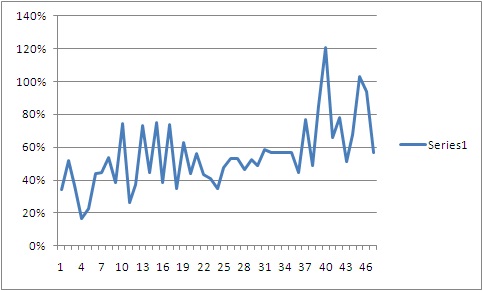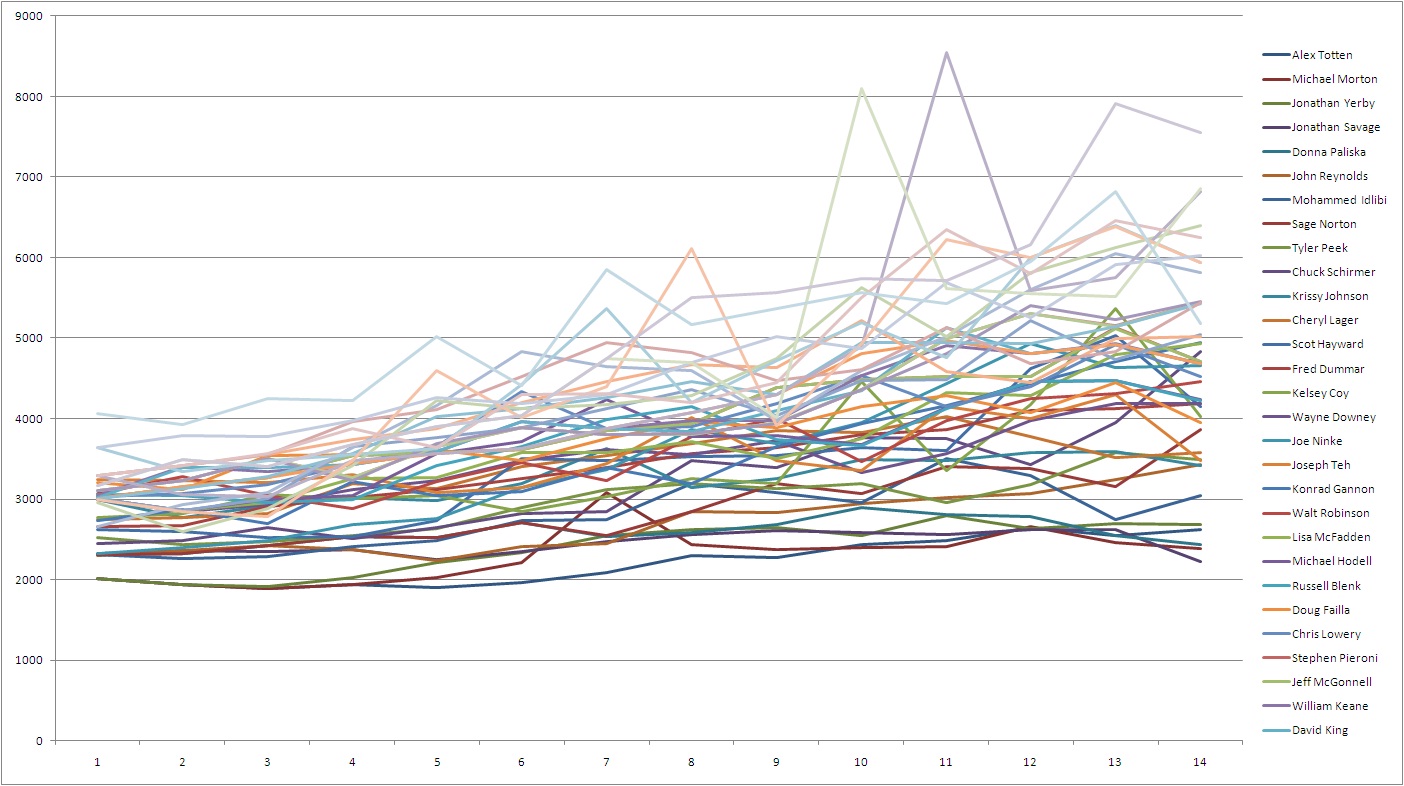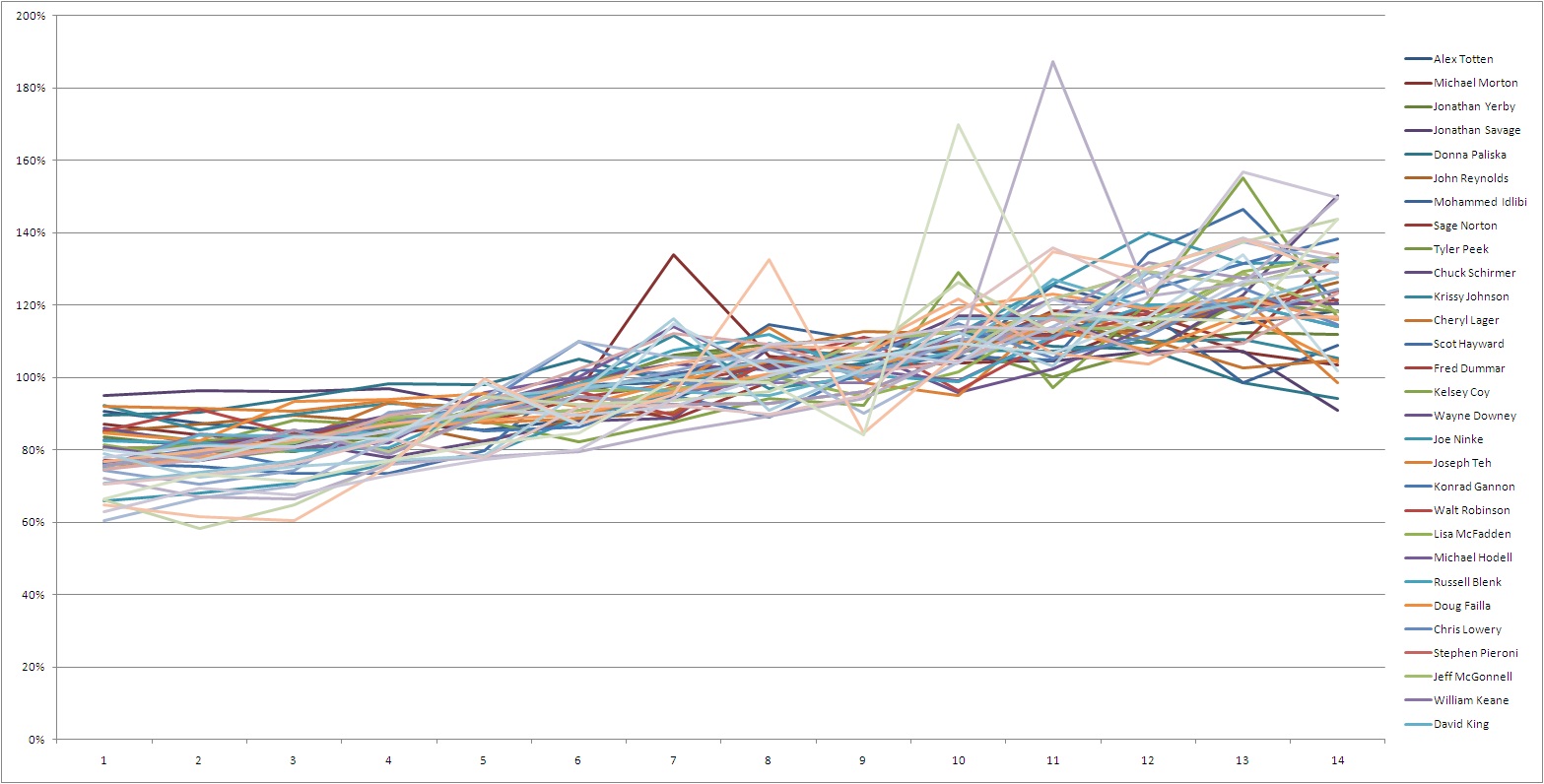Slowing up at Weymouth Woods 100K
Weymouth Woods 100K is unusual for an ultra because it is a lap course with chip timing. This gives accurate timing for each of the 14 laps, which were nicely published for some number crunching.
Looking at the split times, it is immediately obvious that people slow up in the race. But does everyone? And by how much? I pulled the split times (via some custom code) into Excel and did some graphing to find out...
Contents
1 Absolute Times
This graph shows the time taken for each lap (in seconds), with each line as a different runner. You can see that the time difference between the fastest and slowest runners grows as the race progresses. Initially there is about 2,000 seconds between the fastest and slowest, but at the end, the gap grows to 5,000.
2 Relative Times
For this graph, I worked out each runners average lap time, then divided each lap by the average. This graph then shows how much faster or slower a runner completes each lap compared with their average. A runner who runs even splits would be a flat line, a runner how slows up will be an upward facing line, and if any runner had done negative splits (got faster), the line would slope downward.
This graph shows a much more consistent picture, with each runner slowing up as the race progresses. Most runners start off between 5% and 40% faster than there average, and end up between their average and 50% slower. (Two runners, Donna and I, did our last lap faster than average.)
3 Slow Down - The Extremes
Looking at the fastest and slowest lap times, the average slowdown is 55%. The least anyone slowed down was 17% and the most was 121%. Of course, the slowest lap can easily be a rogue value, as you can see from some of the spikes in the graphs above.
4 Slow Down - The Standard Deviation
The standard deviation is how much things vary from the average. Making lots of assumptions, about 68% of laps would be within one standard deviation of the average, and about 95% of lap times within twice that value. So the average standard deviation is 17%. That means that most people's lap times slowed down by about 34%.
5 What does it mean?
That's the really hard question to answer. Is slowing down A Bad Thing, or an optimal strategy? Conventional wisdom is to run close to even splits, but I don't know of any study to show this works best.
Looking at the WW100K, the variation in finish time does not dramatically go up with the finishing place.
 (Plot of standard deviation against finishing place.)
(Plot of standard deviation against finishing place.)
Note - the spreadsheet is available on request - just email spreadsheet@fellrnr.info and I'll send it to you.

